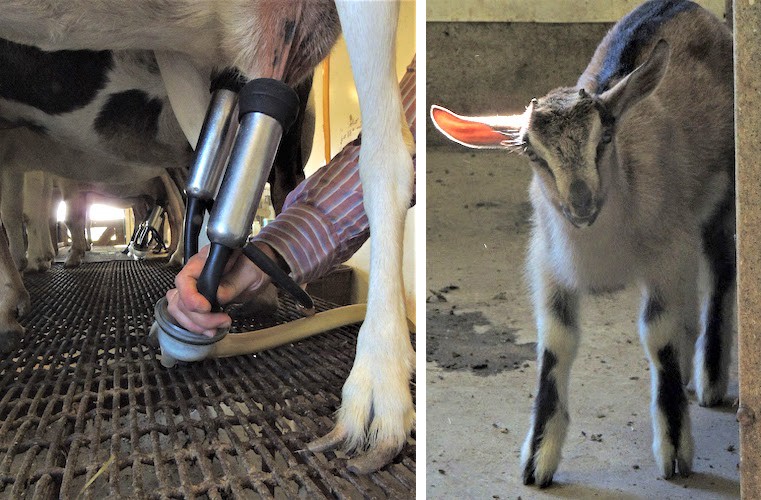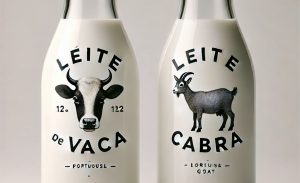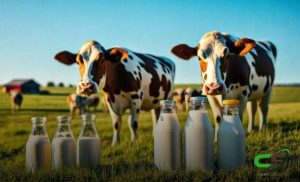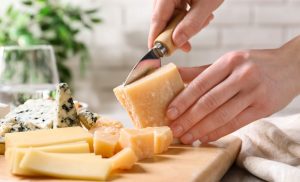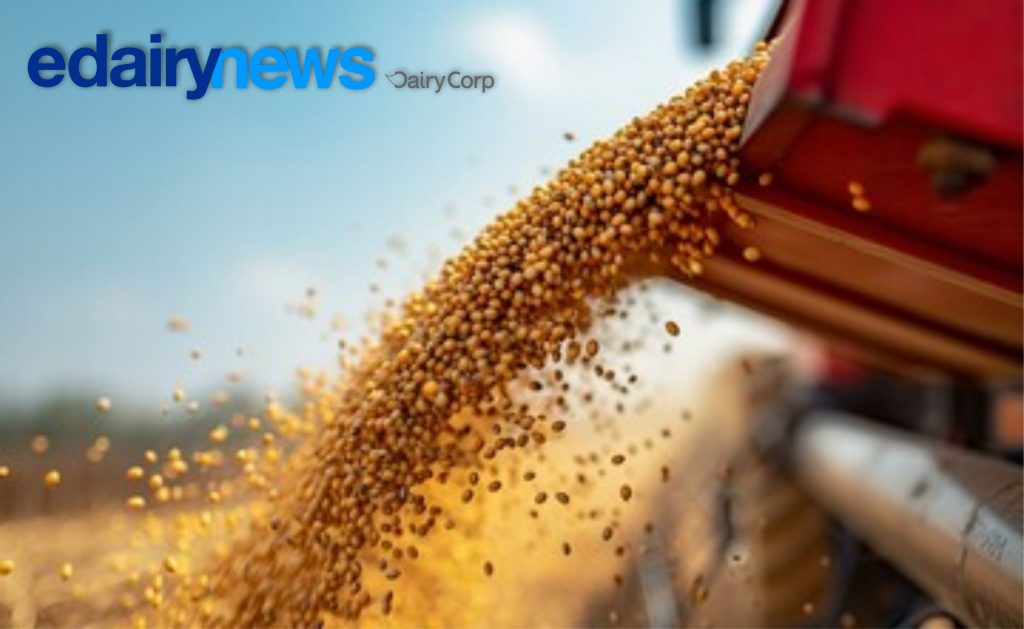Recent data from the National Agricultural Statistics Service shows that Iowa is ranked third in the country in dairy goat production, behind Wisconsin and California. Iowa is tied with Texas at No. 3. According to the USDA, the state’s milk goat inventory has grown 74% since 2007, the Iowa Dairy Goat Association says on its website.
Despite Iowa’s high-ranking in the dairy goat industry, it is still a small, niche market with producers making various cheeses, milk, yogurt, soaps and lotions often sold at farmers’ markets, cooperatives and grocery stores across the state.
There are 214 licensed dairy goat herds in Iowa, with the largest concentration in the eastern half of the state, according to a survey last fall conducted by Iowa State University. There are approximately 34,000 milking does in Iowa.
Producers have to be licensed and are subject to Department of Agriculture inspections in order to sell their milk or cheese, which means there are many more small family operations that milk goats for their personal use or to make products, such as soap, which they can sell.
The survey — conducted by Jennifer Bentley, an ISU extension dairy field specialist, and Leo Timms, a professor emeritus of animal science at ISU — provides some insight into the dairy goat industry in Iowa. For example, the average herd size is between 100 and 199 goats, with some herds being as large as 300 or more goats. An average goat will produce around 2,000 pounds of milk a year, or up to a gallon a day, according to the American Dairy Goat Association.
The majority of goat farmers are between 30 and 50 years old, with between 40 and 50% indicating they had made upgrades to their operation in the past five years. Another 50% indicated they planned to expand their herd size in the next five years.
For many producers, their dairy goat herd is their sole source of income.
A lot is being learned about the industry. One thing that has not been explored is what impact the industry has on the state’s economy, Timms said.
“Nobody’s looked at it. Nobody’s done it,” he said. “It’s just too small, but it would be interesting to look at that.”
Another reason it often goes unnoticed is because the dairy goat industry remains in the shadow of the large farm economies, such as corn, soybeans and hogs, he said.
Bentley said the survey was the first time they had taken a look into the dairy goat industry.
While there may be growth within the industry, the growth is happening within existing herds, and not from new people getting into it, she said. Raising goats requires less land, and lower input costs, such as feed, Bentley said. Goat milk brings better prices at the market than cow milk, too, she said.
It’s also not unusual for people to transition from milking cows to milking goats, she said.
“A lot of them did come from dairy cow farms and converted, or transitioned because … they didn’t have a lot of land base to work with cows,” Bentley said. “Cows require a lot more feed intake so … moving to a smaller ruminant would be probably ideal.”
Although no study has been done of the industry’s economic impact, Bentley said it would likely be more locally focused with producers selling to local customers through farmers’ markets, stores and co-ops.
In the survey, producers generally said they felt profitable, which Bentley said could be an indicator to the dairy goat industry’s impact on the towns where they live.
“I think that’s important for local economies,” she said. “You kind of see where livestock has gone away in rural towns. A lot of businesses go away, too. All those people that it takes to manage livestock, so if livestock goes away you lose a lot of those resources. So, if you have a pocket of dairy goats in a county or an area, they could help keep some of those jobs there, and help provide for the local economy.”
Dave Peffers, the president of the Iowa Dairy Goat Association who milks 15 goats with his family near Pella, said a lot of producers are small and not included in the number of licensed herds tracked by the USDA.
“And those numbers [of smaller producers] keep climbing every year as more and more people are finding out the benefits of goat milk,” said Peffers, who works full-time as an engineer at Vermeer. “A lot of people have digestive issues with cow milk.”
Peffers said his family makes cheese and soaps, and feeds the excess milk to hogs the family also raises. He said he and his family got into dairy goat farming to be more self sufficient. They also raise bees and chickens.
“That’s what drew us into it, but being around the animals [goats] keeps you in it, they are my stress relief, shall we say,” Peffers said.
Paula Olson, owner of Swede Point Creamery near Madrid, has a milking herd of 40 goats, making primarily different varieties of cheeses. Olson, who has been milking goats for about four years, is about to launch a line of ice cream made with goat’s milk.
Olson, who had retired from milking cows, described her venture into goat milking as a “4-H project that’s gone crazy.” “The kids wanted a couple of goats and now we have this,” she said.
Olson said goat cheese can be an acquired taste.
“The first time I tried it, I couldn’t believe it tasted that bad, so I bought a book and learned how to make some cheese and it was pretty good,” Olson said.
Olson said what makes it fun is experimenting to discover new things to do with goat milk and working with the restaurants who use her products to find new ways to incorporate it into their dishes.
“It’s kind of like a big chemistry lab,” she said. “It’s fun to see how other people are using our products in everyday cooking. There’s more ways to eat it than just on a cracker.”

